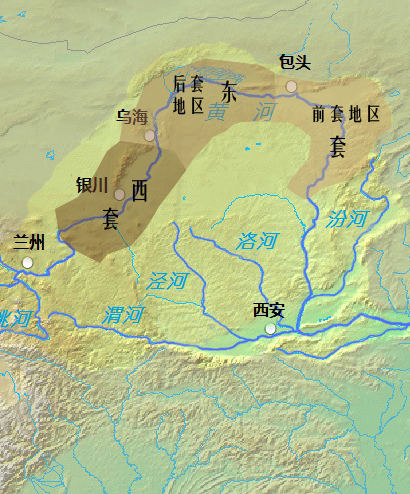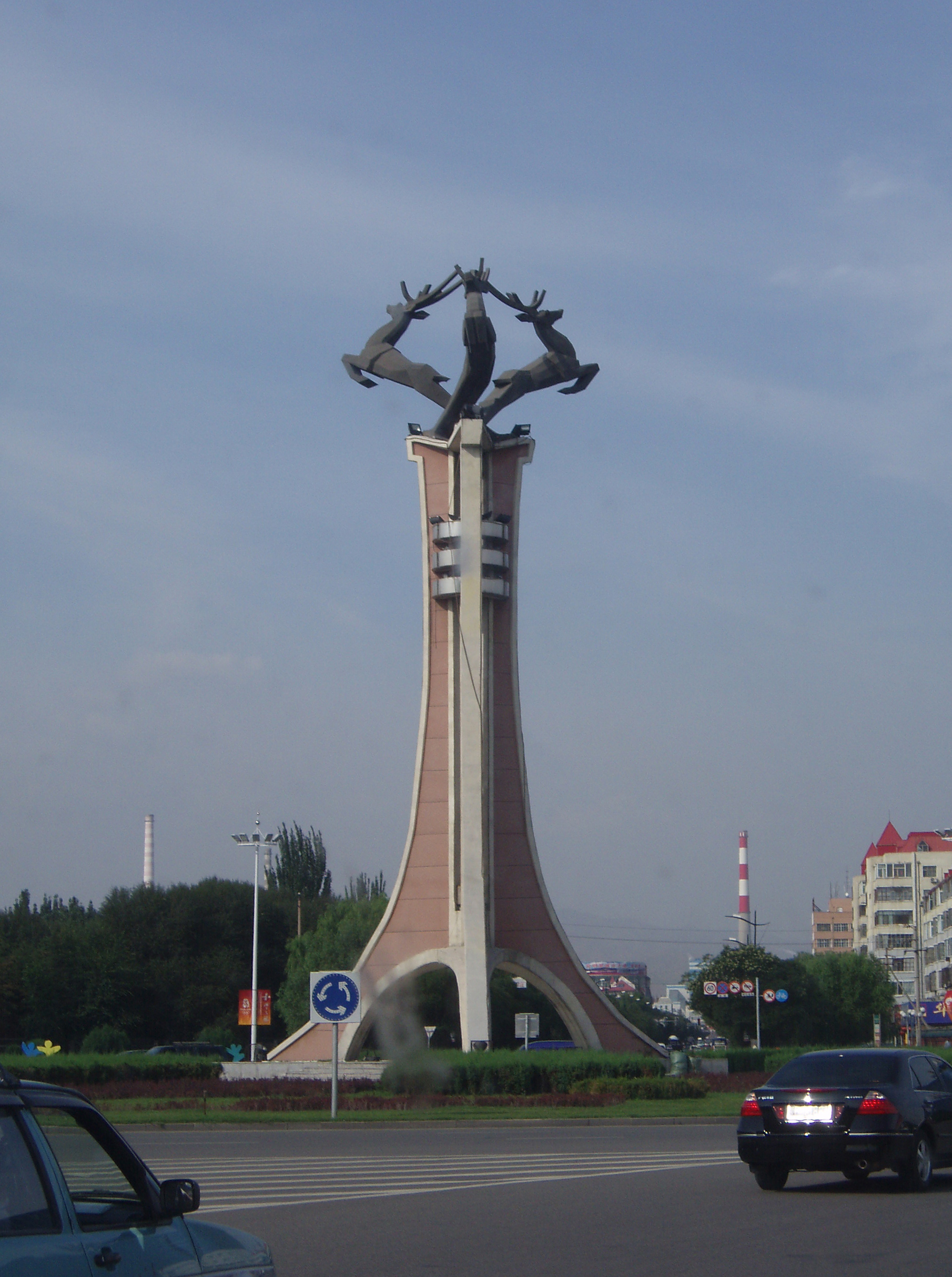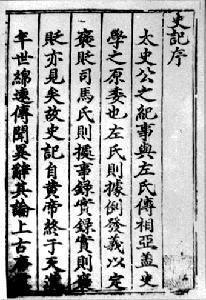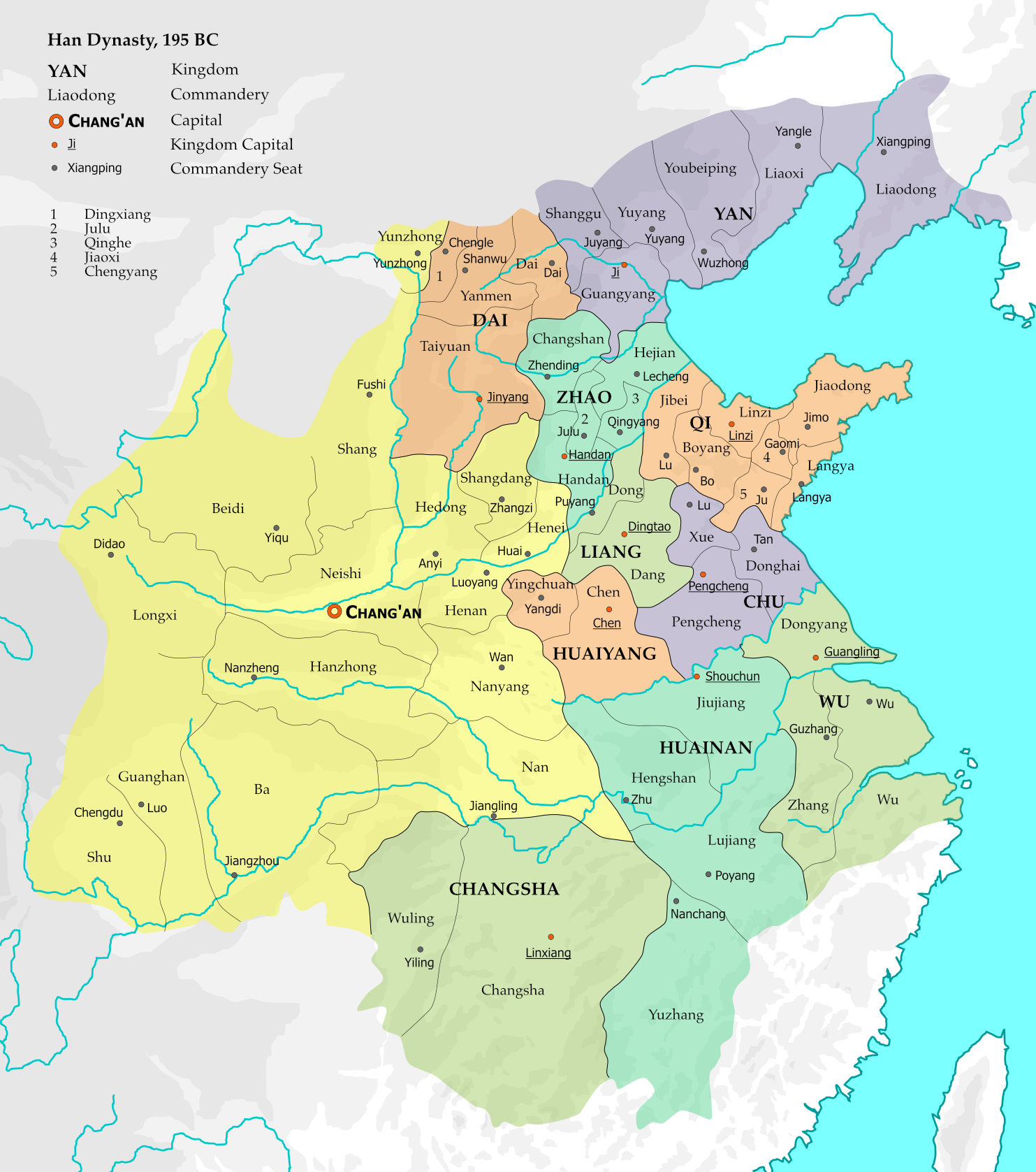|
Wuyuan Commandery
Wuyuan Commandery ( zh, 五原郡) was a historical commandery of China, located in eastern Hetao region. The commandery sat near the modern city of Baotou, Inner Mongolia. During late Warring States period and Qin dynasty, the region was part of Jiuyuan Commandery (九原郡), which was possibly established during King Wuling of Zhao's reign after a successful campaign against the Linhu (林胡) and Loufan (樓煩) peoples. The Xiongnu controlled the region after the fall of Qin dynasty. In 127 BC, general Wei Qing of Han dynasty attacked Xiongnu and conquered Hetao. Wuyuan Commandery was subsequently established on part of the newly gained land. In late Western Han dynasty, the commandery administered 16 counties, including Jiuyuan (九原), Guling (固陵), Wuyuan (五原), Linwo (臨沃), Wenguo (文國), Heyin (河陰), Puze (蒱澤), Nanxing (南興), Wudu (武都), Yiliang (宜梁), Manbai (曼柏), Chengyi (成宜), Guyang (稒陽), Mopang (莫庞), Xi'anyang (西安陽) a ... [...More Info...] [...Related Items...] OR: [Wikipedia] [Google] [Baidu] |
Jun (country Subdivision)
A jùn (郡) was a historical administrative division of China from the Eastern Zhou (c. 7th century BCE) until the early Tang dynasty (c. 7th century CE). It is usually translated as a commandery. Countries around China have adopted administrative divisions based on or named after the ''jùn''. History and development China Eastern Zhou During the Eastern Zhou's Spring and Autumn period from the 8th to 5th centuries BCE, the larger and more powerful of the Zhou's vassal states—including Qin, Jin and Wei—began annexing their smaller rivals. These new lands were not part of their original fiefs and were instead organized into counties (''xiàn''). Eventually, jun were developed as marchlands between the major realms. Despite having smaller populations and ranking lower on the official hierarchies, the jun were larger and boasted greater military strength than the counties. As each state's territory gradually took shape in the 5th ... [...More Info...] [...Related Items...] OR: [Wikipedia] [Google] [Baidu] |
Hetao
Hetao () is a C-shaped region in northwestern China consisting of a collection of flood plains stretching from the banks of the northern half of the Ordos Loop, a large northerly rectangular bend of the Yellow River that forms the river's entire middle section. The region makes up the northern margin of the Ordos Basin, bounded in the west by the Helan Mountains, the north by the Yin Mountains, the east by the northern portion of Lüliang Mountains, and the south by the Ordos Desert and the Loess Plateau (separated by the course of the Ming Great Wall). The Hetao region is divided into two main sections — the "West Loop" () in Ningxia, and the "East Loop" () in Inner Mongolia. The west section includes the alluvial Yinchuan Plain (, a.k.a. Ningxia Plain) around Shizuishan, Yinchuan and Wuzhong, and the Weining Plain () around Zhongwei. The east section is further divided into two parts — the western "Back Loop" (), which includes the Bayannur Plain () around Baya ... [...More Info...] [...Related Items...] OR: [Wikipedia] [Google] [Baidu] |
Baotou
Baotou (; mn, Buɣutu qota, Бугат хот) is the largest city by urban population in Inner Mongolia, China. Governed as a prefecture-level city, as of the 2020 census, its built-up (''or metro'') area made up of its 5 urban districts is home to 2,261,089 people with a total population of 2,709,378 accounting for counties under its jurisdiction. The city's namesake, literally translated to "place with deer", is of Mongolic origin or "Lucheng" (), meaning "City of Deer". Alternatively Baotou is known as the "City of Steel in Gobi" (). Previously the town's principal industry was steel. However, in recent decades Baotou has become internationally known for processing rare earth minerals mined in Bayan Obo, making the city the largest Chinese source of the minerals. Though central to the city's economy, it also produces toxic tailings contained by the Baotou Tailings Dam . History Ancient times The area now known as Baotou was inhabited by nomads, some of whose descend ... [...More Info...] [...Related Items...] OR: [Wikipedia] [Google] [Baidu] |
Inner Mongolia
Inner Mongolia, officially the Inner Mongolia Autonomous Region, is an autonomous region of the People's Republic of China. Its border includes most of the length of China's border with the country of Mongolia. Inner Mongolia also accounts for a small section of China's border with Russia (Zabaykalsky Krai). Its capital is Hohhot; other major cities include Baotou, Chifeng, Tongliao, and Ordos. The autonomous region was established in 1947, incorporating the areas of the former Republic of China provinces of Suiyuan, Chahar, Rehe, Liaobei, and Xing'an, along with the northern parts of Gansu and Ningxia. Its area makes it the third largest Chinese administrative subdivision, constituting approximately and 12% of China's total land area. Due to its long span from east to west, Inner Mongolia is geographically divided into eastern and western divisions. The eastern division is often included in Northeastern China (Dongbei) with major cities including Tongliao, Chifeng ... [...More Info...] [...Related Items...] OR: [Wikipedia] [Google] [Baidu] |
Warring States Period
The Warring States period () was an era in ancient Chinese history characterized by warfare, as well as bureaucratic and military reforms and consolidation. It followed the Spring and Autumn period and concluded with the Qin wars of conquest that saw the annexation of all other contender states, which ultimately led to the Qin state's victory in 221 BC as the first unified Chinese empire, known as the Qin dynasty. Although different scholars point toward different dates ranging from 481 BC to 403 BC as the true beginning of the Warring States, Sima Qian's choice of 475 BC is the most often cited. The Warring States era also overlaps with the second half of the Eastern Zhou dynasty, though the Chinese sovereign, known as the king of Zhou, ruled merely as a figurehead and served as a backdrop against the machinations of the warring states. The "Warring States Period" derives its name from the '' Record of the Warring States'', a work compiled early in the Han dynasty. Ge ... [...More Info...] [...Related Items...] OR: [Wikipedia] [Google] [Baidu] |
Qin Dynasty
The Qin dynasty ( ; zh, c=秦朝, p=Qín cháo, w=), or Ch'in dynasty in Wade–Giles romanization ( zh, c=, p=, w=Ch'in ch'ao), was the first dynasty of Imperial China. Named for its heartland in Qin state (modern Gansu and Shaanxi), the Qin dynasty arose as a fief of the Western Zhou and endured for over five centuries until 221 BCE when it founded its brief empire, which lasted only until 206 BCE. It often causes confusion that the ruling family of the Qin kingdom (what is conventionally called a "dynasty") ruled for over five centuries, while the "Qin Dynasty," the conventional name for the first Chinese empire, comprises the last fourteen years of Qin's existence. The divide between these two periods occurred in 221 BCE when King Zheng of Qin declared himself the First Emperor of Qin, though he had already been king of Qin since 246 BCE. Qin was a minor power for the early centuries of its existence. The strength of the Qin state was greatly increased by the Le ... [...More Info...] [...Related Items...] OR: [Wikipedia] [Google] [Baidu] |
King Wuling Of Zhao
King Wuling of Zhao () (died 295 BCE, reigned 325 BCE – 299 BCE) reigned in the State of Zhao during the Warring States period of Chinese history. His reign was famous for one important event: the reforms consisting of "Wearing the Hu (styled) Attire and Shooting from Horseback (in battle)" (Simplified Chinese: 胡服骑射, Traditional Chinese: 胡服騎射) He was credited for the implementation of protective outfit during military events and proceedings. The son of Zhao Suhou (Marquess Su of Zhao, Simplified Chinese: 赵肃侯), King Wuling of Zhao ascended to the throne at 325 BCE, about halfway into the Warring States Period. His reign coincided with the appearance of several other notable figures in the Warring States. He was also the first ruler of Zhao to style himself "king" (王), but later reversed the decision. He would later receive the title as part of his posthumous name. Rule and reforms During the early years of his reign, the Kingdom of Zhao was constantly har ... [...More Info...] [...Related Items...] OR: [Wikipedia] [Google] [Baidu] |
Records Of The Grand Historian
''Records of the Grand Historian'', also known by its Chinese name ''Shiji'', is a monumental history of China that is the first of China's 24 dynastic histories. The ''Records'' was written in the early 1st century by the ancient Chinese historian Sima Qian, whose father Sima Tan had begun it several decades earlier. The work covers a 2,500-year period from the age of the legendary Yellow Emperor to the reign of Emperor Wu of Han in the author's own time, and describes the world as it was known to the Chinese of the Western Han dynasty. The ''Records'' has been called a "foundational text in Chinese civilization". After Confucius and the First Emperor of Qin, "Sima Qian was one of the creators of Imperial China, not least because by providing definitive biographies, he virtually created the two earlier figures." The ''Records'' set the model for all subsequent dynastic histories of China. In contrast to Western historical works, the ''Records'' do not treat history as "a ... [...More Info...] [...Related Items...] OR: [Wikipedia] [Google] [Baidu] |
Xiongnu
The Xiongnu (, ) were a tribal confederation of nomadic peoples who, according to ancient Chinese sources, inhabited the eastern Eurasian Steppe from the 3rd century BC to the late 1st century AD. Modu Chanyu, the supreme leader after 209 BC, founded the Xiongnu Empire. After their previous rivals, the Yuezhi, migrated west into Central Asia during the 2nd century BC, the Xiongnu became a dominant power on the steppes of East Asia, centred on the Mongolian Plateau. The Xiongnu were also active in areas now part of Siberia, Inner Mongolia, Gansu and Xinjiang. Their relations with adjacent Chinese dynasties to the south-east were complex—alternating between various periods of peace, war, and subjugation. Ultimately, the Xiongnu were defeated by the Han dynasty in a centuries-long conflict, which led to the confederation splitting in two, and forcible resettlement of large numbers of Xiongnu within Han borders. During the Sixteen Kingdoms era, as one of the ... [...More Info...] [...Related Items...] OR: [Wikipedia] [Google] [Baidu] |
Wei Qing
Wei Qing (died 106 BC), courtesy name Zhongqing, born Zheng Qing in Linfen, Shanxi, was a Chinese military general and politician of the Western Han dynasty who was acclaimed for his campaigns against the Xiongnu, and his rags to riches life. He was a consort kin of Emperor Wu of Han as the younger half-brother of Emperor Wu's wife Empress Wei Zifu, and later the third husband of Emperor Wu's older sister Eldest Princess Yangxin. There is evidence to suggest that he was also a lover of Emperor Wu. He was also the maternal uncle of Huo Qubing, another decorated Han general who participated in the war against the Xiongnu. Early life Wei Qing was born from humble means as a bastard child from a serf family. His father Zheng Ji (鄭季) was a low-level official for Pingyang County (平陽縣, in modern Linfen, Shanxi) and was commissioned to serve at the estate of Cao Shou (曹壽), the Marquess of Pingyang (平陽侯), and his wife Princess Pingyang (平陽公主, Empero ... [...More Info...] [...Related Items...] OR: [Wikipedia] [Google] [Baidu] |
Han Dynasty
The Han dynasty (, ; ) was an Dynasties in Chinese history, imperial dynasty of China (202 BC – 9 AD, 25–220 AD), established by Emperor Gaozu of Han, Liu Bang (Emperor Gao) and ruled by the House of Liu. The dynasty was preceded by the short-lived Qin dynasty (221–207 BC) and a warring interregnum known as the ChuHan contention (206–202 BC), and it was succeeded by the Three Kingdoms period (220–280 AD). The dynasty was briefly interrupted by the Xin dynasty (9–23 AD) established by usurping regent Wang Mang, and is thus separated into two periods—the #Western Han, Western Han (202 BC – 9 AD) and the #Eastern Han, Eastern Han (25–220 AD). Spanning over four centuries, the Han dynasty is considered a golden age (metaphor), golden age in Chinese history, and it has influenced the identity of the History of China, Chinese civilization ever since. Modern China's majority ethnic group refers to themselves as the "Han Chinese, Han people", the Sinitic langu ... [...More Info...] [...Related Items...] OR: [Wikipedia] [Google] [Baidu] |
Book Of Han
The ''Book of Han'' or ''History of the Former Han'' (Qián Hàn Shū,《前汉书》) is a history of China finished in 111AD, covering the Western, or Former Han dynasty from the first emperor in 206 BCE to the fall of Wang Mang in 23 CE. It is also called the ''Book of Former Han''. The work was composed by Ban Gu (32–92 CE), an Eastern Han court official, with the help of his sister Ban Zhao, continuing the work of their father, Ban Biao. They modeled their work on the '' Records of the Grand Historian'', a cross-dynastic general history, but theirs was the first in this annals-biography form to cover a single dynasty. It is the best source, sometimes the only one, for many topics such as literature in this period. A second work, the '' Book of the Later Han'' covers the Eastern Han period from 25 to 220, and was composed in the fifth century by Fan Ye (398–445). Contents This history developed from a continuation of Sima Qian's '' Records of the Grand Histo ... [...More Info...] [...Related Items...] OR: [Wikipedia] [Google] [Baidu] |



.jpeg/1200px-Siège_de_Beijing_(1213-1214).jpeg)





